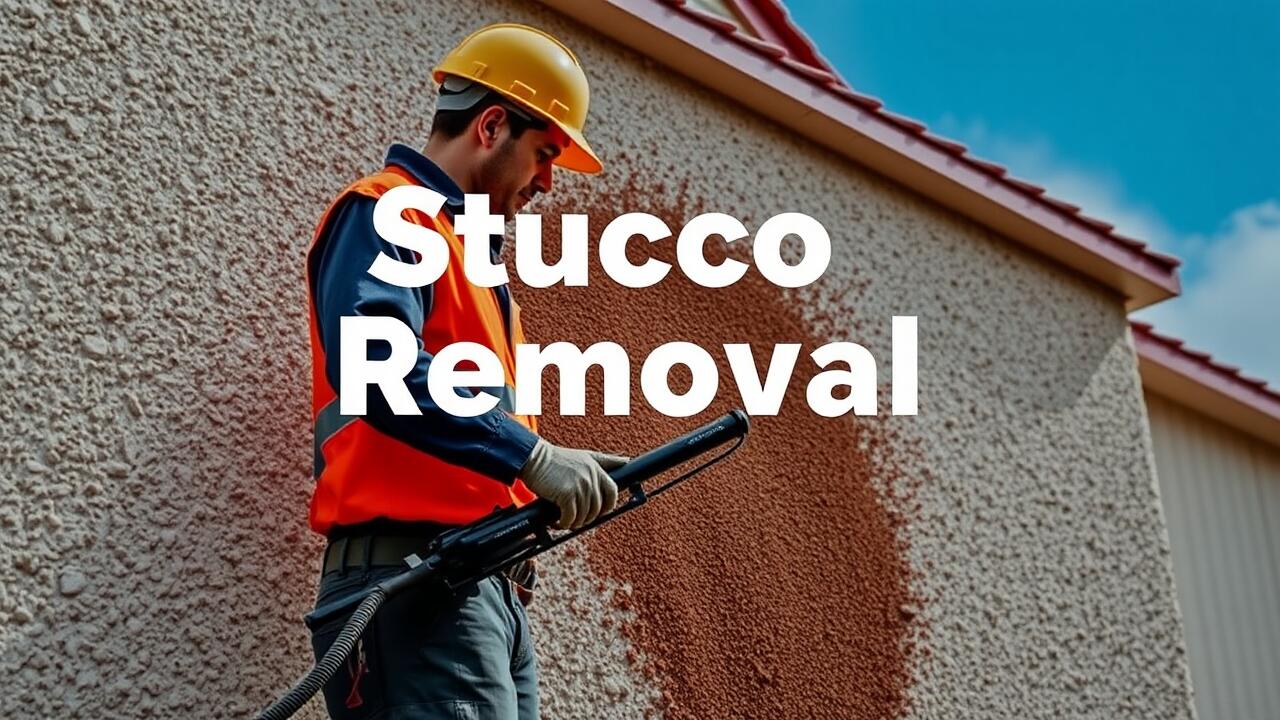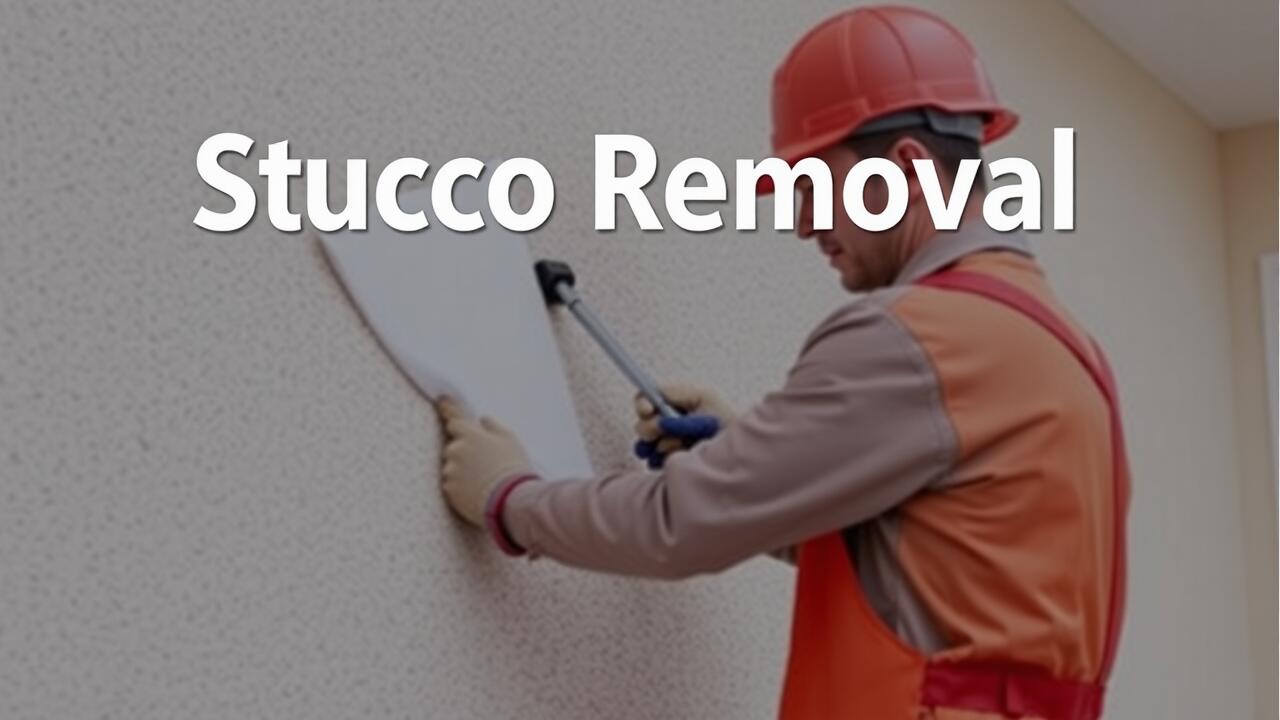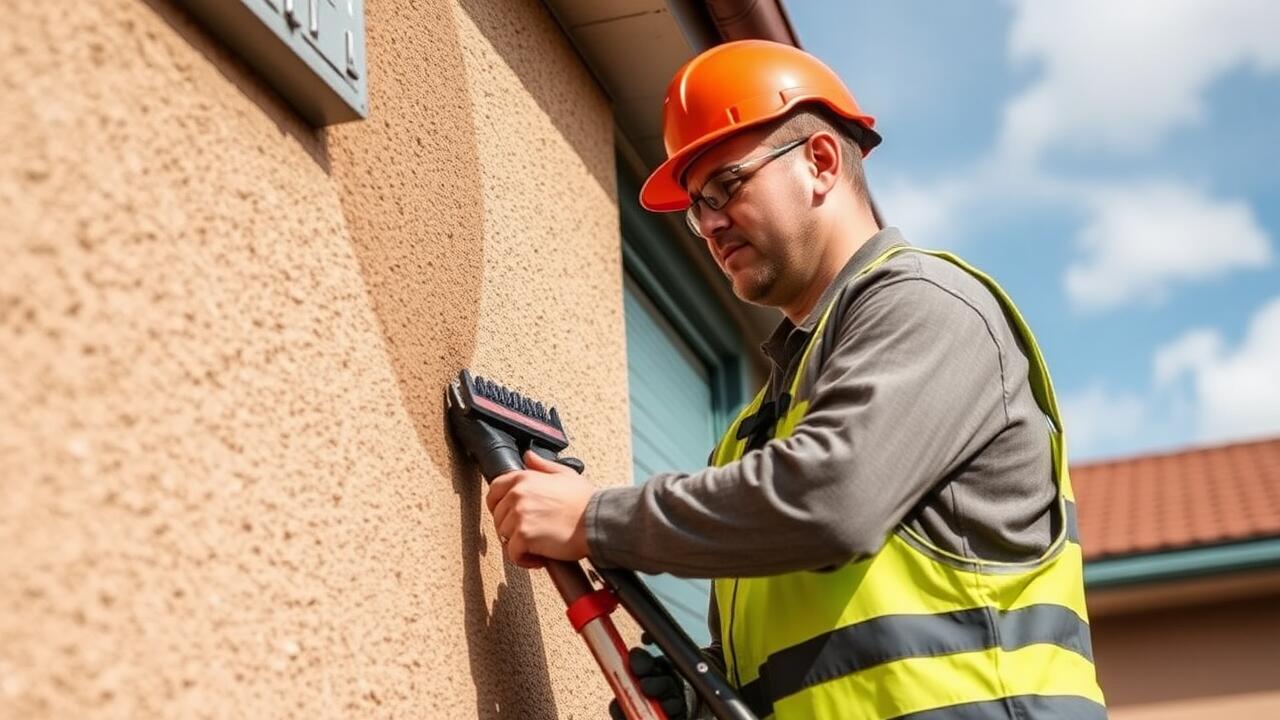
Techniques for Removing Stucco
When contemplating stucco removal, several techniques can be employed to ensure minimal damage to the underlying surfaces. One effective method involves the use of a pry bar to gently lift and separate the stucco from the wall underneath. This approach requires careful attention to detail, preventing damage to the underlying materials. For larger areas, a chisel and hammer may be necessary to break up the stucco into manageable pieces, allowing for easier removal without compromising the integrity of the underlying surface.
Alternatively, using a power washer can be beneficial for loosening stucco that has been properly saturated with water. The high-pressure water stream can help detach layers of stucco, making the removal process more efficient. It is essential to protect surrounding structures and surfaces while using this technique. If unsure about the best method for your situation, searching for "Stucco Removal near me" can connect you with local professionals who can provide expert assistance tailored to your specific needs.
Step-by-Step Procedures for Effective Removal
When beginning the stucco removal process, it's essential to gather the right tools and materials. Safety gear such as goggles, gloves, and a dust mask is crucial to protect yourself from debris. Start by scoring the stucco surface with a utility knife; this cuts through the material and creates access points for removal. Once scored, use a chisel or a flat pry bar to chip away at the edges, working your way towards the center from your initial cuts. This method minimizes the risk of damaging the underlying surface.
As you progress, be mindful of the structural integrity of what lies beneath the stucco. If you notice any areas that are difficult to remove, address them with a hammer and chisel, applying gentle force to avoid impact damage. Consider checking online for "stucco removal near me" to identify local professionals who can provide support if the task becomes overwhelming. Regularly step back to assess your work, ensuring the underlying surface remains intact during the process. Keep the work area tidy by storing tools and removing debris frequently to create a safe and efficient removal environment.
Handling Potential Issues During Removal
As you progress with the stucco removal process, you may encounter potential issues that can complicate your efforts. One common problem is the presence of underlying materials that might be damaged during removal. If you live in an area where finding resources for "stucco removal near me" is easy, consider consulting local professionals who can assist in addressing these complications. They often have experience with old structures and can help you navigate any unexpected repairs that may arise.
Another issue to consider is the dust and debris generated during removal. This can affect not just the immediate work area but also neighboring spaces. Using tarps or plastic sheeting to contain the mess can mitigate the spread of debris. If you need additional help, search for "stucco removal near me" to find local experts who can manage cleanup effectively while ensuring the surrounding areas remain undisturbed.
Troubleshooting Common Problems
When engaging in stucco removal, unforeseen issues can arise that may complicate the process. One common problem is discovering that the underlying surface is damaged or deteriorated. This can happen if the stucco was poorly applied or has been exposed to moisture over time. Assess the condition of the surface underneath carefully. If significant damage is found, it may require additional repairs before proceeding with any new surface treatment.
Another issue that may arise is finding that the stucco does not come off as easily as expected. This could be due to inadequate preparation or improper tools being used. Utilizing a proper stucco removal tool is essential. If you're still facing difficulties, consider searching for “Stucco Removal near me” to find professionals who can assist. They often have specialized equipment and expertise to handle stubborn materials safely without compromising the underlying structure.
Cleaning Up After Stucco Removal
After successfully removing the stucco, cleaning up the work area is essential to maintain a safe and organized environment. Begin by collecting larger debris and disposing of it properly. Use a heavy-duty trash bag or container to hold the chunks of stucco and any other waste materials. Be sure to check the surrounding areas for any fallen pieces or dust that may have settled during the removal process.
Once the larger debris is taken care of, focus on sanitizing the space. Sweep or vacuum the area thoroughly to eliminate dust and small particles. Additionally, consider wiping down surfaces that may have collected grime or residue. If looking for professional assistance, searching for “Stucco Removal near me” can connect you with local experts who provide comprehensive services, ensuring your area is clean and safe following the demolition.
Proper Disposal and Clean-up Procedures
After completing the stucco removal, it is essential to address the debris and waste generated during the process. Gather all remnants, including broken pieces of stucco, dust, and other materials, ensuring they are properly contained. Use heavy-duty trash bags or containers for safe transportation. Local regulations often have specific guidelines regarding the disposal of construction debris. Researching these requirements can help in reducing any legal complications and ensure a responsible approach to cleanup.
For those searching for efficient ways to manage cleanup, services for "Stucco Removal near me" can provide valuable assistance. These companies not only handle the removal of stucco but can also take care of the disposal of materials, making the process seamless. Hiring professionals can save time and guarantee proper methods are followed for both the removal and disposal, maintaining the integrity of the surrounding environment.
FAQS
What tools do I need to remove stucco safely?
Essential tools for stucco removal include a chisel, a hammer, a pry bar, a utility knife, safety goggles, gloves, and a dust mask. A power washer can also be useful for cleaning up afterward.
Can I remove stucco by myself, or should I hire a professional?
You can remove stucco yourself if you have the right tools and experience, but hiring a professional is recommended if you're unsure about the process or if the stucco is extensive.
How can I prevent damage to the underlying surfaces while removing stucco?
To prevent damage, work slowly and carefully, use the right tools, and avoid excessive force. It’s also important to assess the underlying material before beginning removal.
What should I do if I encounter mold or mildew behind the stucco?
If you find mold or mildew, it’s essential to address it immediately. Clean the affected area with a mold remover and allow it to dry thoroughly. Consider consulting a professional if the issue is extensive.
What are the proper disposal methods for removed stucco?
Removed stucco should be disposed of according to local regulations. Typically, you can take it to a construction debris landfill or check if your area has recycling facilities for concrete materials.


